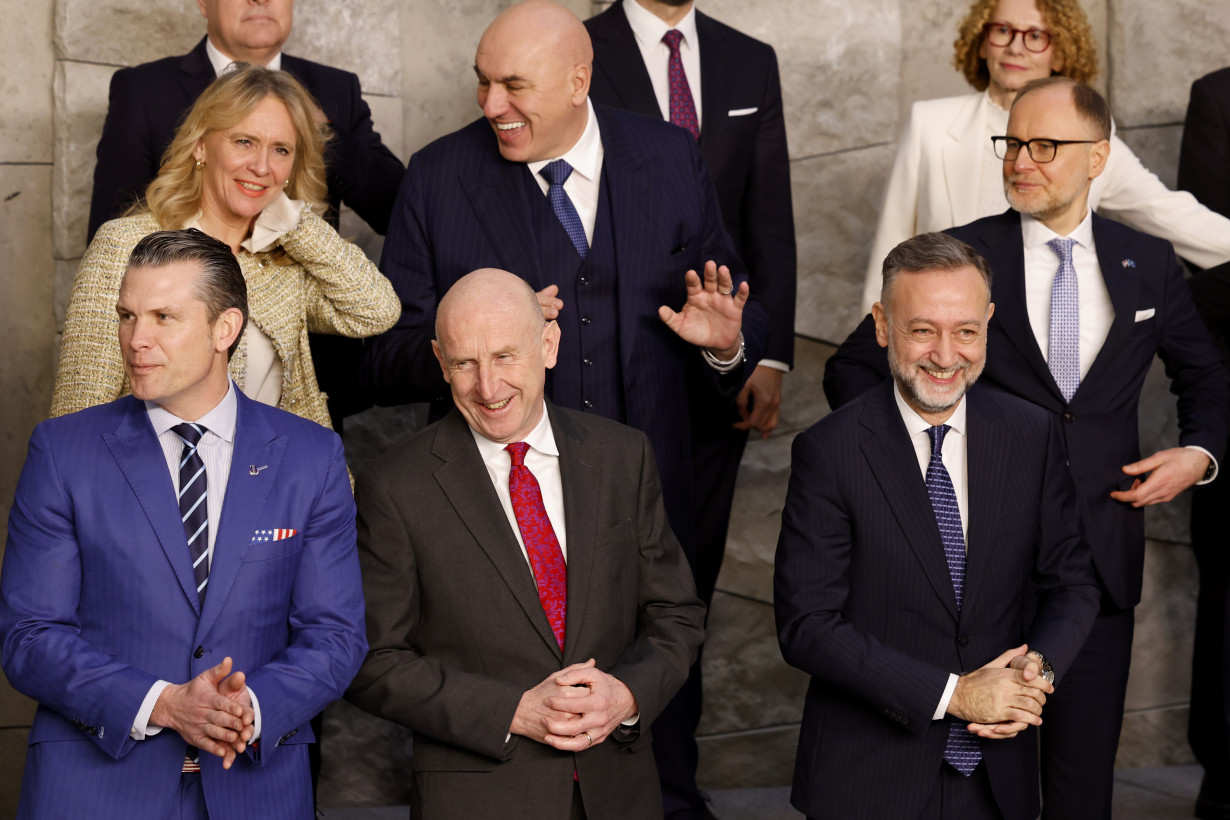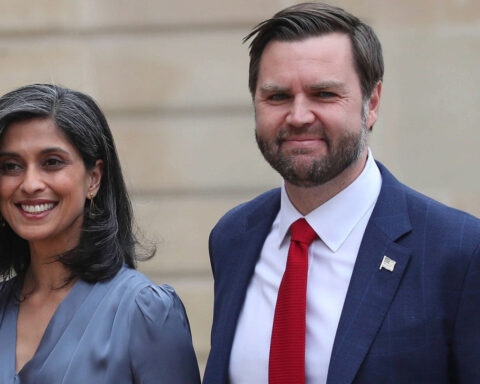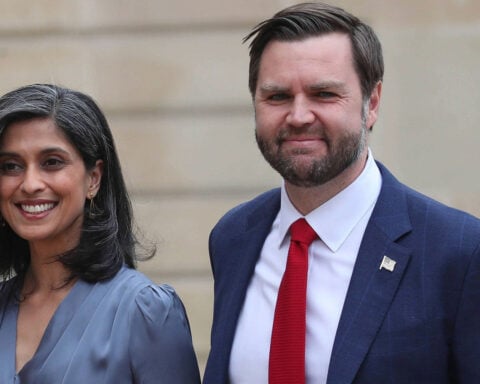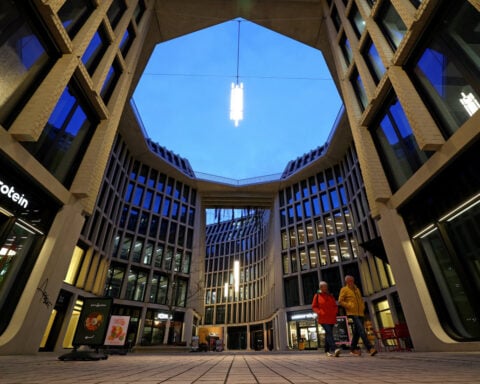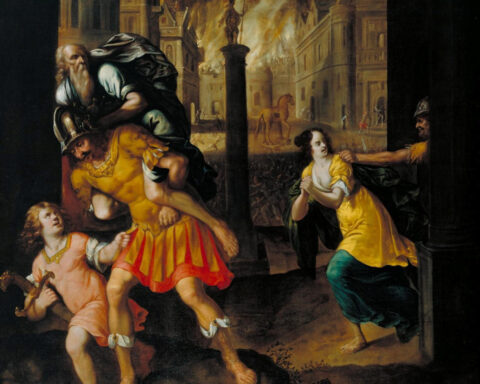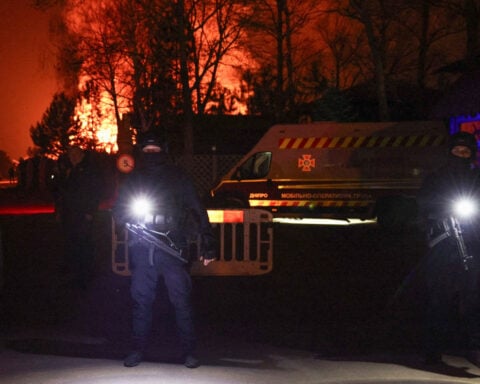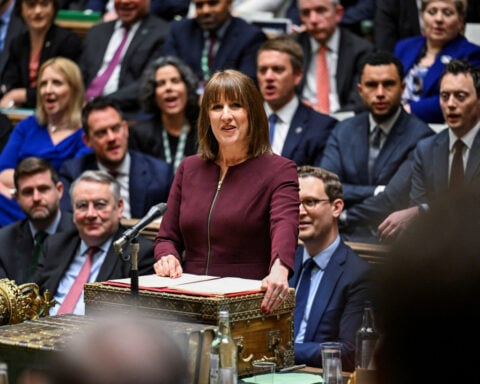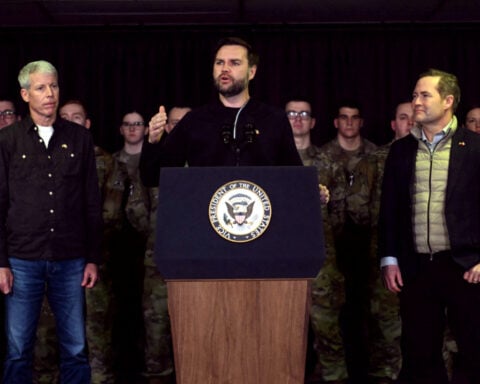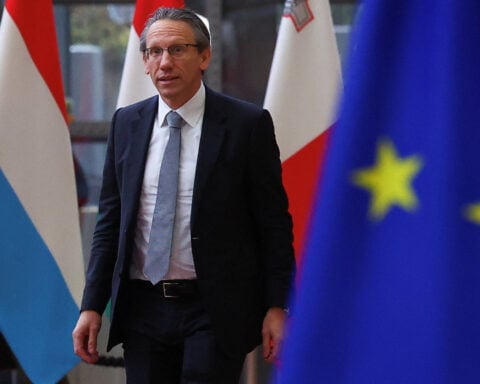BRUSSELS (AP) — In just one speech by U.S. Defense Secretary Pete Hegseth this week, the most powerful member of NATO has thrown the world’s biggest military alliance into disarray, raising troubling questions about America’s commitment to European security.
Hegseth told almost 50 of Ukraine ’s Western backers on Wednesday that he had joined their meeting “to directly and unambiguously express that stark strategic realities prevent the United States of America from being primarily focused on the security of Europe.”
“The United States faces consequential threats to our homeland. We must — and we are — focusing on security of our own borders,” he said.
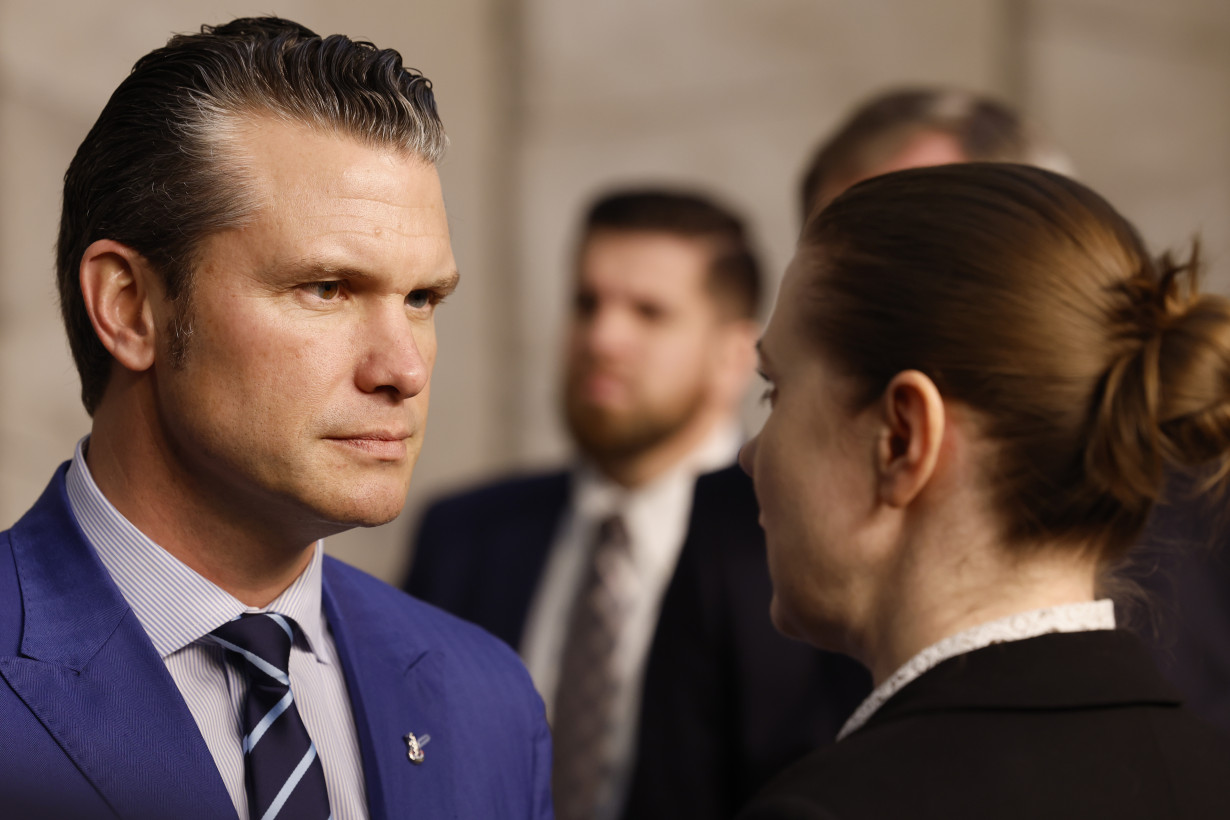
Reading the riot act to U.S. allies, Hegseth said that Ukraine will not get all its territory back from Russia and will not be allowed to join NATO, which would provide the ultimate security guarantee to ensure that Russian President Vladimir Putin never attacks it again.
He insisted NATO will not be involved in any future force that might be required to police the peace in Ukraine. European and other nations will, but the Europeans will have to pay for it. No American troops would take part in such an operation, he warned.
Beyond that, Hegseth said that NATO will not come to the rescue of any European nation involved in that force if it is attacked by Russia. It’s unclear what role the U.S. would play, if any, although Russia is sure to test the force’s resolve if America does not provide backup.
French Defense Minister Sébastien Lecornu said that NATO faces “a real moment of truth.”
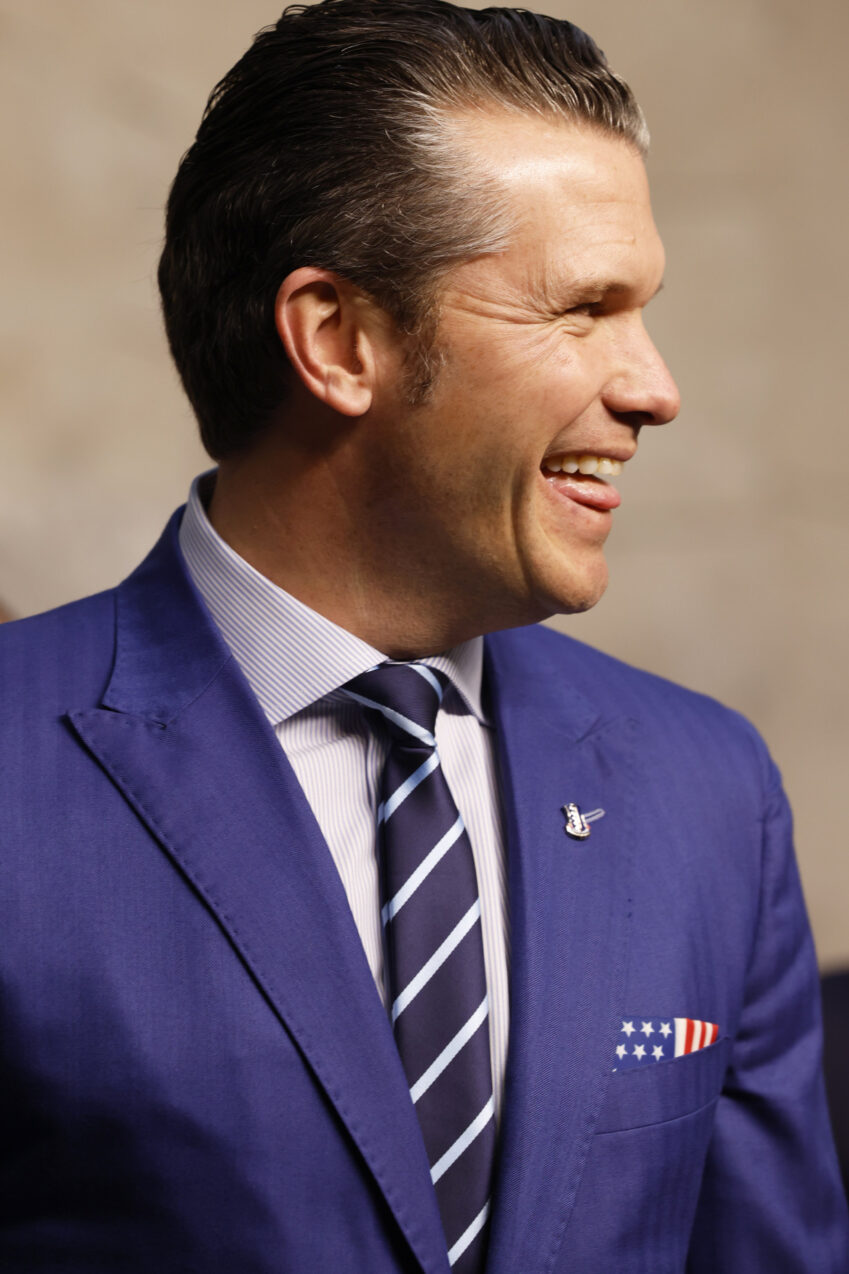
“To say that it’s the biggest and most robust alliance in history is true, historically speaking. But the real question is will that still be the case in 10 or 15 years,” he said.
What is NATO?
Founded in 1949, the North Atlantic Treaty Organization was formed by 12 nations to counter the threat to European security posed by the Soviet Union during the Cold War. Dealing with Moscow is in its DNA. Keeping the peace outside the Euro-Atlantic area is not.
NATO’s ranks have grown since the Washington Treaty was signed 75 years ago — to 32 countries after Sweden joined last year, worried by an increasingly aggressive Russia.
NATO’s collective security guarantee — Article 5 of the treaty — underpins its credibility.
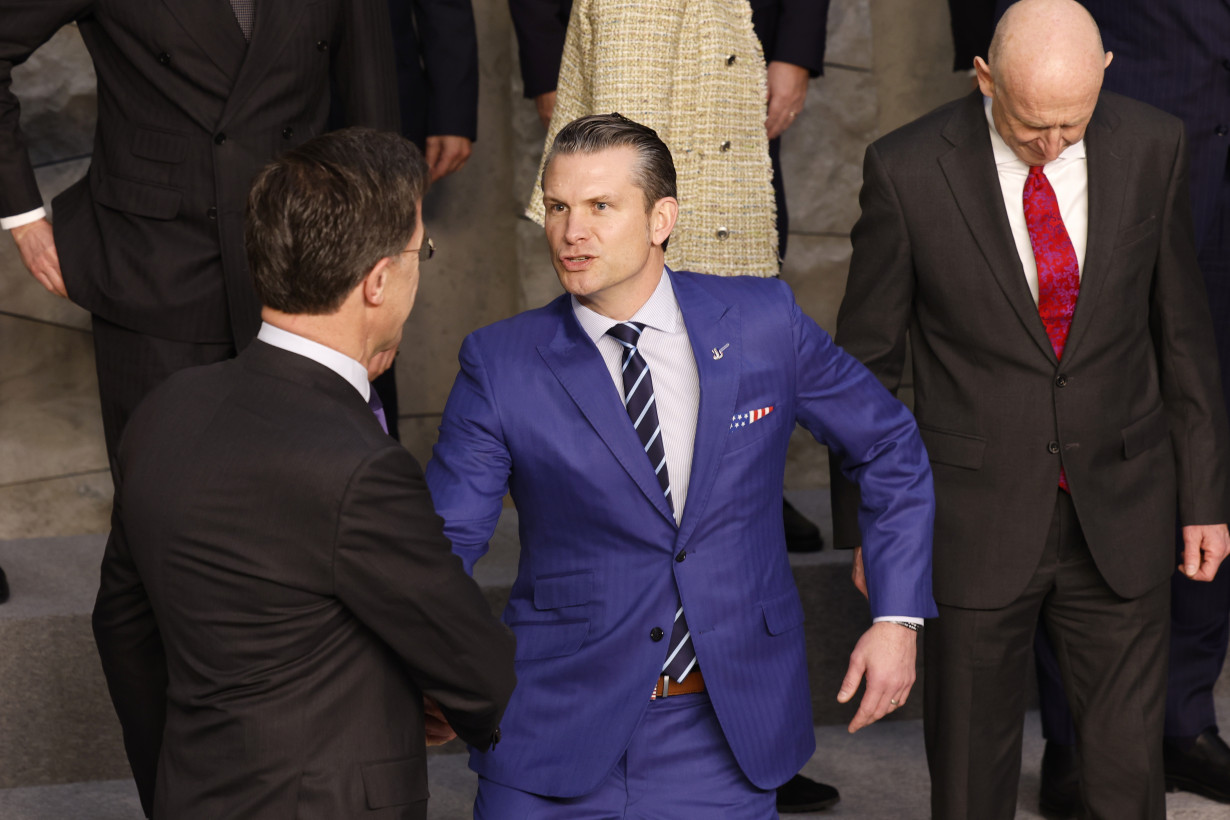
It’s a political commitment by all member countries to come to the aid of any member whose sovereignty or territory might be under attack. Hegseth has now raised doubts about the U.S. commitment to that pledge, although he did say that his country is not planning to leave the alliance.
NATO’s doors are open to any European country that wants to join and can meet the requirements and obligations. Importantly, NATO takes its decisions by consensus, so every member has a veto. This week, Hegseth took Ukraine’s candidacy off the table.
Who’s in charge?
The United States is the most powerful member. It spends much more on defense than any other ally and far outweighs its partners in terms of military muscle. So Washington drives the agenda. Hegseth’s speech, essentially saying “this is how it’s going to be,” was further proof.
NATO’s day-to-day work is led by former Dutch Prime Minister Mark Rutte.
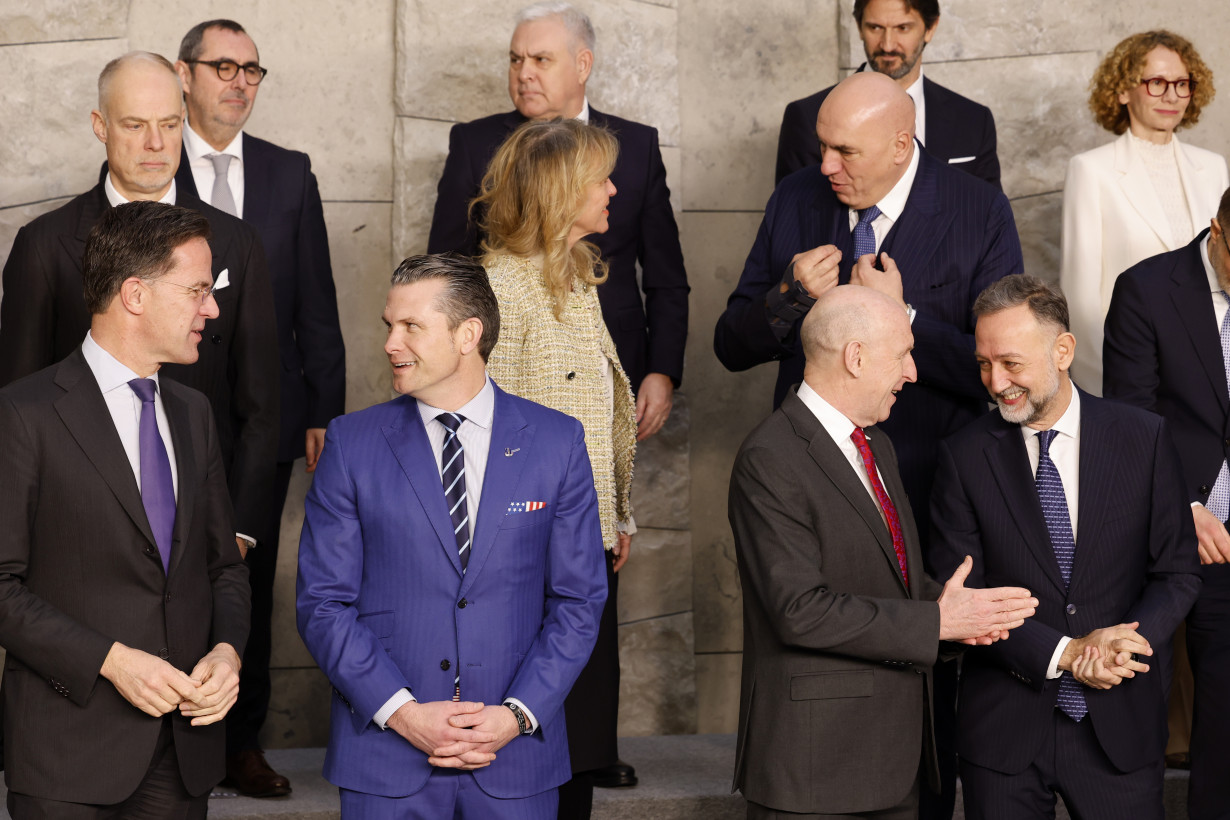
As NATO’s top civilian official, he chairs almost weekly meetings of ambassadors in the North Atlantic Council at its Brussels headquarters. He chairs other “NACs” at ministerial level and summits of heads of state and government. Rutte runs NATO HQ, tries to encourage consensus and speaks on behalf of all 32 members.
NATO’s military headquarters is based nearby in Mons, Belgium. It is always run by a top U.S. officer. The current supreme allied commander Europe is Army Gen. Christopher Cavoli.
What is NATO doing to help Ukraine?
Even though most allies believe that Russia could pose an existential threat to Europe, NATO itself is not arming Ukraine. As an organization, NATO possesses no weapons of any kind. Collectively, the alliance provides only non-lethal support — fuel, combat rations, medical supplies and body armor, as well as equipment to counter drones or mines.
But members do send arms on their own or in groups. European allies provided 60% of the military support that Ukraine received in 2024.
NATO has also helped Ukraine’s armed forces shift from Soviet-era military doctrine to modern thinking, and has strengthened Ukraine’s defense and security institutions.
Much of what NATO does for Ukraine, and indeed for global security, is misunderstood. Often the alliance is thought of as the sum of all U.S. relations with its European partners, from imposing sanctions and other costs on Russia to sending arms and ammunition.
But as an organization, its brief is limited to the defense by military means of its 32 member countries — the sacred Three Musketeers-like vow of all for one, one for all — and a commitment to help keep the peace in Europe and North America.
At least that was the case until this week.
Why has NATO stationed more troops on its European borders?
While some allies have left open the possibility of sending military personnel to Ukraine, NATO itself has no plans to do this, and Hegseth ended any speculation over whether it might.
But a key part of the commitment for allies to defend one another is to deter Russia, or any other adversary, from launching an attack in the first place. Finland and Sweden joined NATO recently because of this concern.
With the war in Ukraine soon to enter its fourth year, NATO has 500,000 military personnel on high readiness to counter any attack, whether it be on land, at sea, by air or in cyberspace.
Isn’t the U.S. doing the heavy lifting?
Due to high U.S. defense spending over many years, America’s armed forces benefit not only from greater troop numbers and superior weapons but also from significant transport and logistics assets.
Other allies are starting to spend more, though. After years of cuts, NATO members committed to ramp up their national defense budgets in 2014 when Russia annexed Ukraine’s Crimean Peninsula.
The aim was for each ally to be spending 2% of gross domestic product on defense within a decade. In 2023, they agreed to make 2% a spending floor, rather than a ceiling. A record 23 countries were expected reach that spending target last year, up from only three a decade ago.
But Rutte has said they will need to raise that to 3% or more.
France’s Lecornu claims that the wrangling over defense spending is “a false debate” as governments and parliaments across Europe are already approving more weapons purchases and bigger military budgets, all while arming Ukraine so it can defend itself.

 Trump has begun another trade war. Here's a timeline of how we got here
Trump has begun another trade war. Here's a timeline of how we got here
 Canada's leader laments lost friendship with US in town that sheltered stranded Americans after 9/11
Canada's leader laments lost friendship with US in town that sheltered stranded Americans after 9/11
 Chinese EV giant BYD's fourth-quarter profit leaps 73%
Chinese EV giant BYD's fourth-quarter profit leaps 73%
 You're an American in another land? Prepare to talk about the why and how of Trump 2.0
You're an American in another land? Prepare to talk about the why and how of Trump 2.0
 Chalk talk: Star power, top teams and No. 5 seeds headline the women's March Madness Sweet 16
Chalk talk: Star power, top teams and No. 5 seeds headline the women's March Madness Sweet 16
 Purdue returns to Sweet 16 with 76-62 win over McNeese in March Madness
Purdue returns to Sweet 16 with 76-62 win over McNeese in March Madness
